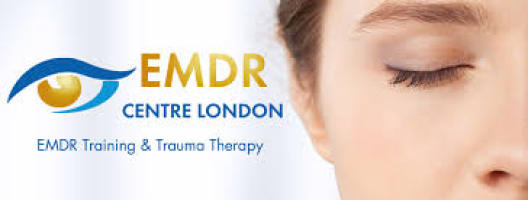Parks Inner Child Therapy (PICT)
Leave the upsets of the past behind...
Parks Inner Child Therapy (PICT) is a powerful and versatile visualisation-based therapy which brings together a number of different therapeutic approaches to help to create rapid and positive change.
Although originally created to specifically help people recover from the trauma and damage related to sexual, physical and emotional abuse during childhood, it is equally effective for a wide range of emotional problems. Eating disorders, Obsessive Compulsive Disorder (OCD) Dissociative Identity Disorder (DID), self- harm, ritual abuse, anxiety or depression, Post Traumatic Stress Disorder (PTSD), irrational fears, working with abusers, grief and loss issues (including murder, suicide, abortion, miscarriage, still birth, loss of job, material things or pets) are all helped through the PICT approach. PICT therapists also have the skills to assist with Critical Incident Debriefing (the witnessing or experiencing of highly traumatic events, such as vehicle crashes, bombings etc).
The most significant feature of PICT is that it can bring change about gently because there is no need to disclose any details of what happened in the past. The effects of the trauma are addressed rather than the detail, which allows clients to maintain their privacy and dignity, whilst working quickly and effectively to create beneficial and lasting change
Through PICT we can see that sometimes the beliefs about ourselves that we learn in childhood hold us back in later life and, even if we are not aware that they are there, they continue to play in the back of our mind giving us unhelpful messages; 'I am not good enough' and 'I am unlovable' being the two most familiar examples.
PICT works on the premise that the ‘inner child’ (the part of our unconscious mind where the memories & beliefs of childhood reside) who holds the original beliefs, can be communicated with and the limiting beliefs can be changed. It may be assumed that this would happen automatically as we become adults, but we do not always know that these beliefs exist and so PICT uses the ‘today’ adult conscious mind to communicate with the inner child from the past and change the thoughts that are holding us back.
At the conclusion of PICT therapy clients regularly report feeling a sense of completion, a new sense of understanding of how and why they had their problems and a feeling that they now have all the puzzle pieces of their lives back together. This sense of inner harmony generally prompts clients to feel they are able to successfully deal with any new challenges life may bring because they are no longer hindered by problems or traumas from the past.
How PICT differs from other approaches
PICT has a flexible structure – a beginning point, middle and end, as well as providing clear measurable results. PICT can easily, quickly and gently deal with even the most traumatic experiences because there is no need to reveal painful details. PICT is designed to obtain thorough understanding and resolution of trauma/problems, rather than leaving gaps that can bring the same problems back to the surface later on. It is designed to work fast whilst still creating deep and lasting change – what would generally take six months to a year using most therapeutic models, can be cleared in 5 to 12 sessions using PICT. Consequently, PICT greatly reduces waiting lists, ends the ‘revolving door’ syndrome and creates gentle, lasting resolution, rather than only offering ‘support’.
PICT was devised over 30 years ago but continues to remain at the cutting edge of the resolution of trauma, childhood abuse & emotional challenges. The rapidity of its effectiveness has been enhanced by the introduction of the PICT Quick Change model, devised originally to cater for clients from overseas; where resolution may be completed in a series of 5 consecutive days of 4 hour sessions. (The QC 4 hour sessions can also be offered in 2 or 3 day weekly formats).
As well as being an experienced PICT Practitioner and a Specialist in childhood sexual abuse issues, I am also a PICT Supervisor, which means I guide other PICT Practitioners in their work.
Please see Testimonial page for a write up of how PICT has really helped one of my clients to go on and discover their 'real self' and, as a result, gone on to achieve truly amazing things.
EMDR
EMDR stands for Eye Movement Desensitisation and Reprocessing and is a method of trauma therapy developed in the late 1980s by Clinical Psychologist Dr. Francine Shapiro. Sine the 1990s it has successfully been used as a method of trauma therapy and is also being used more and more in training, counselling and coaching.
EMDR is a method that accelerates the processing of traumatic, frozen memories and resolves fixed behavioural patterns. Clients often report spontaneous insights into themselves, which are linked to the traumatic memories, which empower them to comprehend new feelings, thoughts and actions.
After only a few sessions, EMDR causes noticeable changes with regards to cognition, emotions and body experience. It can be used as a standalone therapy or alongside other established therapeutic approaches.
Successful EMDR treatment lowers emotional distress, reformulates negative self-beliefs and cognitions and lowers the level of psychological agitation through reducing nervous system arousal.
During EMDR treatment the client repeatedly focusses for short periods of time, simultaneously on traumatic material as well as on an external stimulus, for example bilateral eye movement led by the therapist.
EMDR influences the neural pathways in the brain. Through bilateral stimulation both brain hemispheres are activated and synchronised in relation to a traumatic event.
Scientific studies have repeatedly confirmed the high level of efficacy and lasting results of this therapeutic approach. Since 2006 the effectiveness of EMDR in treating Post Traumatic Stress Disorder (PTSD) has received worldwide recognition. Originally developed and tested for the processing of traumatic experiences in war veterans, its various applications have since become much more diverse.
EMDR is an effective therapeutic for:
- fear, panic attacks and phobias,
- excessive grief reactions,
- coping with illness,
- sleep disorders,
- pain,
- dissociative disorders,
- self-esteem issues,
- performance anxiety,
- PTSD
*Information form EMDR Centre London - EMDR Training and Trauma Therapy
https://emdr-centre-london.org/
Lifespan Integration
Lifespan Integration was created by Peggy Pace from her personal findings that Cognitive Behavioral Therapy (CBT) was not terribly effective for her clients. She was looking for a way to heal historic childhood trauma following the then new beliefs that trauma was held in the body-mind and that the different parts of ourselves needed to be integrated as a whole in order to create healing.
There is plenty of science around this approach but the interesting aspect for me, as a Trauma Informed Therapist, is that it sits very neatly alongside PICT and EMDR as an effective way to heal trauma that is trapped in the body and in our younger selves.
From a client's perspective, it is an approach that does not require any prolonged delving into the past in order to heal painful memories. A timeline is created with the therapist that spans from the time you are born up until the present day and, by reading out these memory cues repeatedly, the brain assimilates the painful episodes in with everything else that creates your story, helping clients to conclude that they are safe in the here and now, and that what happened is over.
I know that it sounds hard to belief but, as with all of my therapies, I have experienced this as a client and can tell you personally that it works - I wouldn't work with it if I didn't feel that. I found that it was really helpful for me to go through my life without dwelling on painful events or having to discuss them, and that it brought to the surface not only things that I had forgotten, but also new ways of looking at those things that I had felt were problematic.
During the initial sessions we will talk a little about the things that are affecting you and that have their roots in your past. This gives me an idea of how best to help you so that I am not inadvertantly creating any upset - everyone works at a different pace and, as with all of my work, I want to get it right for you. We will create your timeline of memory cues, something from each year (it is easier than it sounds!) and that will provide the framework for the work. I will then select cues at intervals and read these to you, one by one but without getting stuck in those painful times, so that your brain can begin to create new pathways that will lead you to feelings of safety. In this way, the system can find healing and integration.
This is an ideal approach for anyone who has past events that they wish to heal and that they do not want to discuss at length. It works in a way that that is powerful but gentle, and easier to experience than to explain.
For more indepth information on Lifespan Integration, the history and science behind it please visit www.lifespanintegration.com





